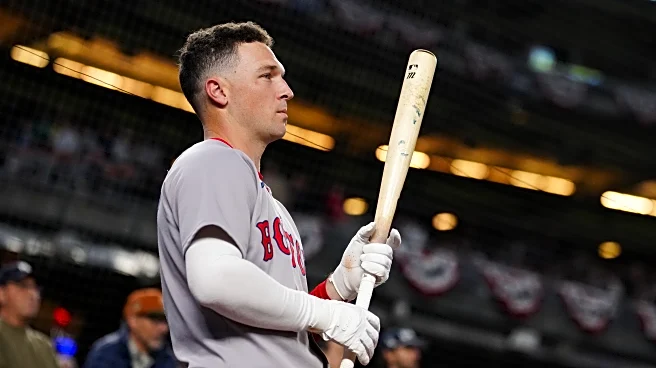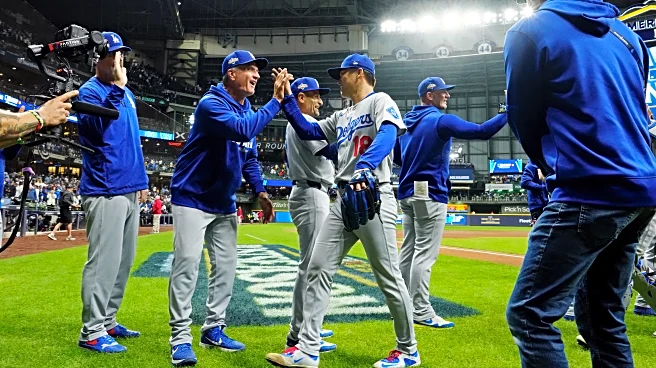What's Happening?
The Los Angeles Dodgers are expected to maintain their aggressive spending habits in the upcoming MLB free agency period for the 2025-26 offseason. Over the past five years, the Dodgers have averaged $390.4
million in free agency spending, a figure that remains substantial even without Shohei Ohtani's $700 million contract. Despite their success, including reaching the National League Division Series (NLDS) for 13 consecutive years, the Dodgers are likely to continue investing heavily to address various team needs. Potential targets include Edwin Díaz, Robert Suarez, Kyle Tucker, Cody Bellinger, Munetaka Murakami, and Alex Bregman. The Dodgers currently have 14 players signed for a combined $280 million in 2026, with additional arbitration-eligible salaries expected to push their spending well above the $244 million luxury-tax threshold.
Why It's Important?
The Dodgers' continued investment in high-profile free agents underscores their commitment to maintaining a competitive edge in Major League Baseball. Their willingness to exceed the luxury-tax threshold highlights their financial strength and strategic approach to team building. This aggressive spending could influence other teams to follow suit, potentially escalating player salaries and altering the dynamics of free agency. The Dodgers' strategy may also impact the competitive balance within the league, as they aim to secure top talent and reinforce their position as perennial contenders.
What's Next?
As the Dodgers prepare for the 2025-26 offseason, they will likely evaluate their roster needs and prioritize acquisitions that can enhance their chances of success. The team's management may focus on bolstering their bullpen and considering options for a third baseman, given Max Muncy's contract situation. The Dodgers' approach to free agency will be closely watched by other teams and analysts, as their decisions could set precedents for spending and player negotiations in the league.
Beyond the Headlines
The Dodgers' spending strategy raises questions about the sustainability of high payrolls and the impact on smaller market teams. Their approach may prompt discussions about the effectiveness of the luxury-tax system in promoting competitive balance. Additionally, the team's focus on acquiring top talent could influence player development strategies, as teams may prioritize immediate success over long-term growth.












